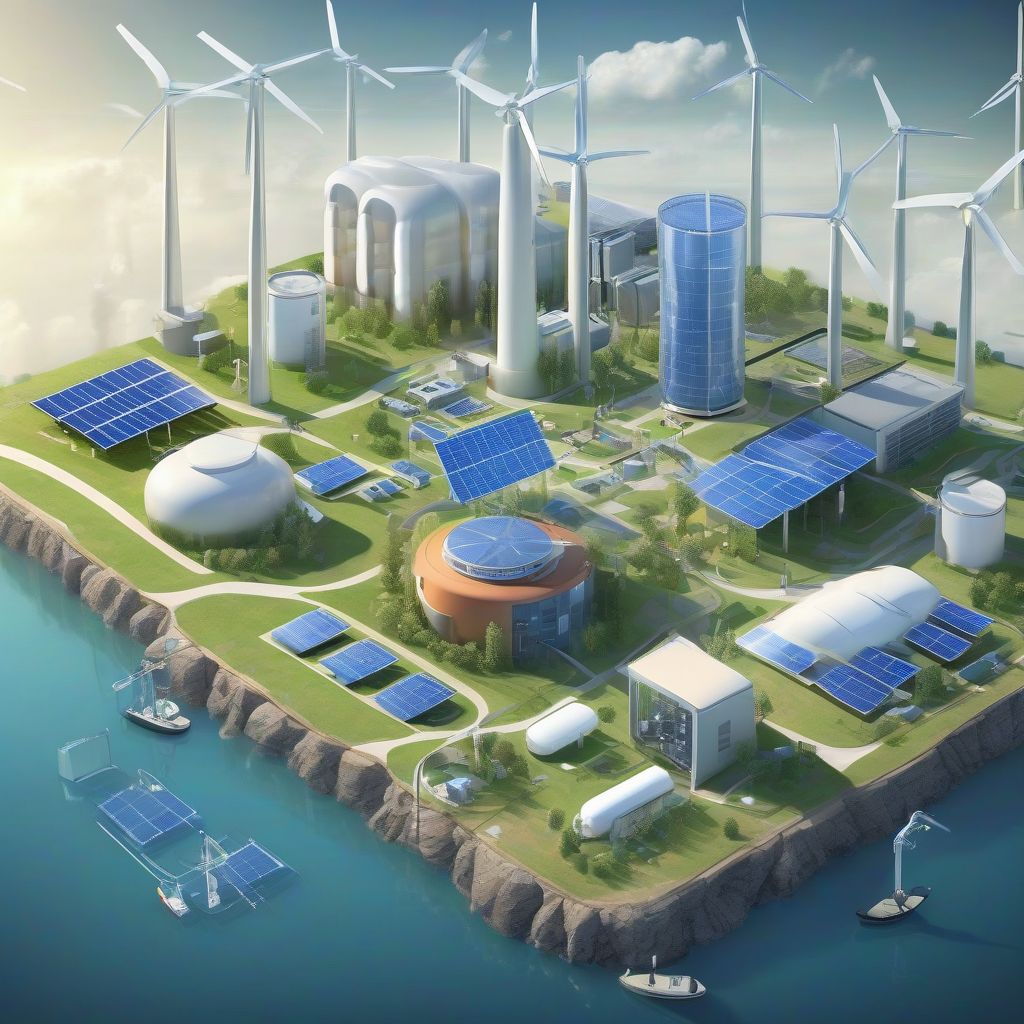Imagine a world where clean, renewable energy is readily available 24/7, regardless of the weather. This dream is rapidly becoming a reality, thanks to advancements in renewable energy storage technology. As the world transitions towards a sustainable future, effectively storing intermittent renewable energy sources like solar and wind is crucial. This article explores the exciting future of renewable energy storage, examining the latest technologies, their potential impact, and the challenges that lie ahead.
The Need for Energy Storage
The intermittent nature of renewable energy sources like solar and wind presents a significant challenge. The sun doesn’t always shine, and the wind doesn’t always blow, creating a mismatch between energy supply and demand. Energy storage bridges this gap, capturing excess energy generated during peak production periods and releasing it when needed, ensuring a consistent and reliable power supply. This is vital for achieving a stable and resilient energy grid powered by renewable sources.
Emerging Storage Technologies
Battery Storage: Leading the Charge
Battery storage is currently the most widely deployed renewable energy storage technology. Lithium-ion batteries, in particular, have seen significant advancements in recent years, offering higher energy density, longer lifespans, and reduced costs. These batteries are ideal for various applications, from grid-scale energy storage to powering electric vehicles. Further research and development are focused on improving battery performance, safety, and sustainability, exploring alternatives like solid-state batteries and flow batteries.
Pumped Hydro Storage: A Proven Solution
Pumped hydro storage is a mature and well-established technology, accounting for a significant portion of global energy storage capacity. It utilizes two reservoirs at different elevations. Excess energy pumps water uphill to the upper reservoir, storing it as potential energy. When electricity is needed, water flows downhill, driving turbines that generate power. While geographically constrained, pumped hydro remains a valuable asset for grid-scale energy storage.
Thermal Energy Storage: Capturing Heat and Cold
Thermal energy storage captures and stores heat or cold for later use. This can involve using molten salt, phase-change materials, or other mediums to store thermal energy generated from solar thermal plants or industrial processes. This stored energy can then be used for heating, cooling, or electricity generation.
Hydrogen Storage: A Fuel for the Future
Hydrogen offers significant potential as a long-duration energy storage medium. Excess renewable energy can be used to produce hydrogen through electrolysis, which can then be stored and used later in fuel cells to generate electricity or directly as a fuel source. Advancements in hydrogen production, storage, and transportation are paving the way for its wider adoption.
Compressed Air Energy Storage (CAES): Harnessing Air Power
CAES systems store compressed air in underground caverns or other suitable formations. When electricity is needed, the compressed air is released, driving turbines to generate power. While geographically limited, CAES can provide large-scale energy storage capabilities.
 Renewable Energy Storage
Renewable Energy Storage
The Impact of Energy Storage
The widespread adoption of renewable energy storage technologies will have profound impacts on the energy landscape. By enabling a stable and reliable supply of renewable energy, these technologies will accelerate the transition to a cleaner, more sustainable energy system. This will lead to reduced greenhouse gas emissions, improved air quality, and greater energy independence.
Challenges and Opportunities
Despite the significant progress, challenges remain in the development and deployment of renewable energy storage. Cost reduction, improved performance, and enhanced safety are crucial for wider adoption. Furthermore, addressing environmental impacts and ensuring sustainable sourcing of materials are essential. However, the opportunities presented by the future of renewable energy storage are immense. Continued research and development, coupled with supportive policies and market incentives, will drive innovation and unlock the full potential of these transformative technologies.
Conclusion
The future of renewable energy storage technology is bright, holding the key to unlocking a sustainable energy future. From advanced batteries and pumped hydro to thermal storage and hydrogen, these technologies are poised to transform the way we generate, store, and consume energy. Overcoming the remaining challenges through innovation and collaboration will pave the way for a world powered by clean, reliable, and sustainable renewable energy. We encourage you to share your thoughts on the future of renewable energy and how we can collectively build a sustainable tomorrow. Let us know your thoughts in the comments below, and share this article with anyone interested in the exciting world of renewable energy!



